Looking for some unique addition to your plant collection? Pick your favorite from these Plants that Start with Q!
When it comes to plants, the alphabet “Q” may not be the most commonly associated letter. However, there are several remarkable plant species whose names begin with this letter, each bringing its own unique charm and beauty to any space they grow. Learn more about these Plants that Start with Q!
Plants that Start with Q
1. Queen’s Tears
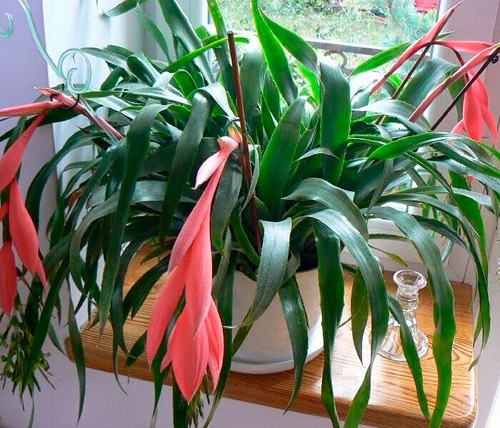
Botanical Name: Billbergia nutans
First, on the list of Plants that Start with Q, we have Queen’s Tears, known for its long, arching leaves that form a rosette. The leaves are slender and slightly serrated, giving them an elegant and delicate appearance. The plant is adorned with attractive, pendant-like flowers that hang gracefully from tall stems.
2. Queen of the Night

Botanical Name: Epiphyllum oxypetalum
The Queen of the Night is an epiphytic cactus known for its impressive cascading effect. It features flat, segmented stems that trail gracefully. These evening-blooming large flowers have a star-like shape, with long, narrow petals that come in beautiful shades of white and cream.
3. Queen Palm
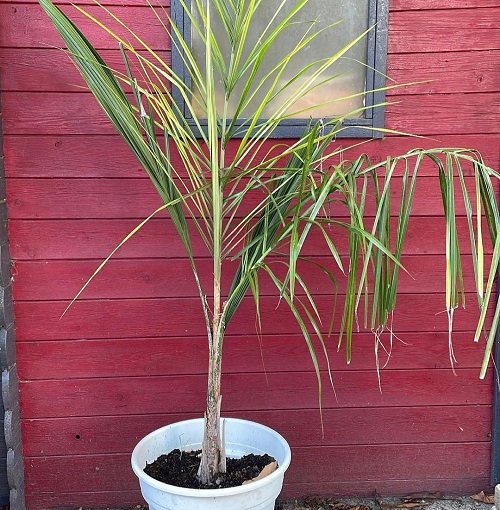
Botanical Name: Syagrus romanzoffiana
With its tall, slender trunk and gracefully arching, feathery leaves at the top, this majestic indoor plant brings a tropical ambiance to any space. The pinnate leaves feature multiple leaflets, giving a lush and full appearance. The Queen Palm adds grandeur to indoor spaces with high ceilings.
4. Quaking Grass

Botanical Name: Briza maxima
This ornamental grass charms with its unique seed heads resembling delicate, drooping hearts or tear-shaped ornaments. The slender stems make the plant sway and “quake” with gentle breezes. Its light green, slender blades create a graceful and airy texture.
5. Queensland Umbrella Tree
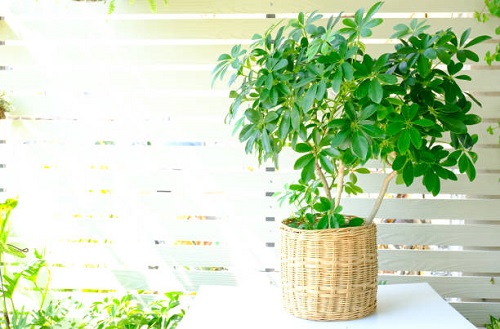
Botanical Name: Schefflera actinophylla
This stunning indoor plant features a thick, woody trunk and glossy palmate leaves radiating from a central point, resembling an umbrella. With vibrant green color and a glossy sheen, the leaves create a dense and lush canopy, making it visually attractive.
6. Queen’s Spiderwort

Botanical Name: Dichorisandra reginae
Known for its vibrant purple-blue flowers, these Plants that Start with Q boast long, slender stems and lance-shaped leaves in deep green. The glossy leaves provide an attractive backdrop to the stunning flowers. With a compact height of 1 to 2 feet, it is suitable for tabletops or hanging baskets.
7. Quickweed
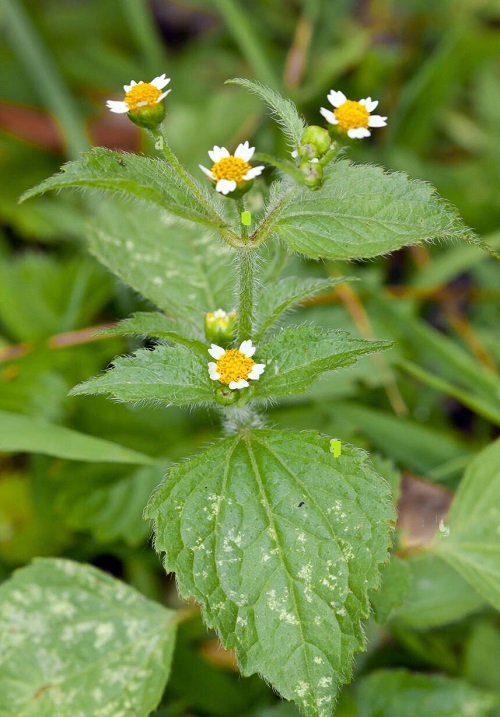
Botanical Name: Galinsoga parviflora
This unique indoor plant features delicate, dainty flowers and small, serrated bright green leaves along the slender stems. The clusters of small white flowers with yellow centers resemble miniature daisies, creating a delightful display.
8. Quillwort

Botanical Name: Isoetes spp.
Quillwort is a fascinating group of aquatic plants that can be grown as indoor specimens in aquariums or aquatic terrariums. These are unique in appearance, resembling miniature grass-like plants with narrow, cylindrical leaves that are green, but some species may have shades of brown or reddish-brown.
9. Quinoa

Botanical Name: Chenopodium quinoa
Quinoa is a versatile indoor plant that is primarily grown for its edible seeds. However, it can also serve as an attractive ornamental plant with broad, lance-shaped leaves that are a vibrant green color. The leaves are soft and slightly fuzzy, adding textural interest to the plant.
10. Quill-leaf Air Plant

Botanical Name: Tillandsia fasciculata
This variety of Airplant features long, slender leaves that resemble quills or feathers, growing in a rosette formation. The leaves have a beautiful green color that can turn reddish or purple when exposed to bright light or during blooming periods. Tall and colorful inflorescence emerges from the center under rare and favorable conditions.
11. Quisqualis Vine
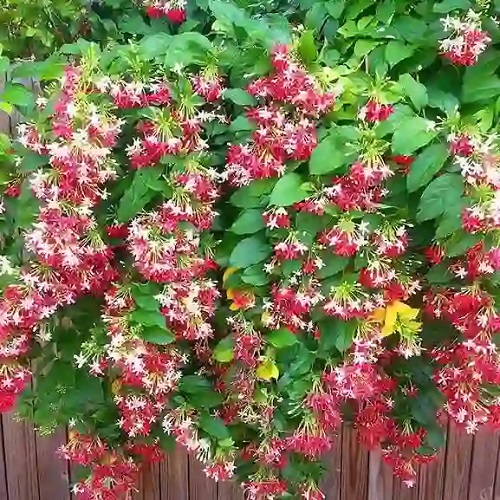
Botanical Name: Combretum indicum
This splendid flowering Vine that Starts with Q brings a burst of color and lushness to indoor spaces. It showcases large, glossy leaves in a deep, lush green color, serving as a beautiful backdrop to the magnificent flowers. The flowers are tubular in shape and arranged in dense clusters.
12. Quaking Aspen

Botanical Name: Populus tremuloides
This deciduous tree boasts a unique feature when its leaves quiver and shimmer in the slightest breeze, creating an attractive effect. The leaves of the Quaking Aspen are small and round, featuring a vibrant green color during the growing season and transitioning to golden yellow in the fall.
13. Queensland Fan Palm

Botanical Name: Licuala ramsayi
This palm species showcases large, fan-shaped leaves with glossy texture and a stunning emerald green color. Though it doesn’t typically flower indoors, its foliage alone makes a bold statement. With an extensive size, this plant requires enough space and regular pruning to aid proper growth.
Learn about Growing Lady Palm Indoors here
14. Queen Victoria Agave

Botanical Name: Agave victoriae-reginae
The Queen Victoria Agave is a striking succulent that commands attention with rosettes of rigid, triangular-shaped leaves bordered with white margins and dark green centers. The leaves are densely packed and grow in a compact manner, creating an eye-catching and symmetrical appearance.
15. Queen Anthurium

Botanical Name: Anthurium warocqueanum
This tropical beauty showcases large, heart-shaped leaves with a velvety texture and deep green color. Though loved for its attractive foliage, the plant produces tall flower spikes with small, inconspicuous flowers surrounded by showy, heart-shaped bracts in shades of dark purple or maroon.
16. Quince

Botanical Name: Cydonia oblonga
Quince is a deciduous shrub that can also be trained into a small tree. While typically grown outdoors, it can also be grown as a container plant indoors, particularly dwarf cultivars. The lovely pink blossoms grace the plant in spring while it grows aromatic, golden-yellow fruits in the fall.
17. Queen Sago Palm
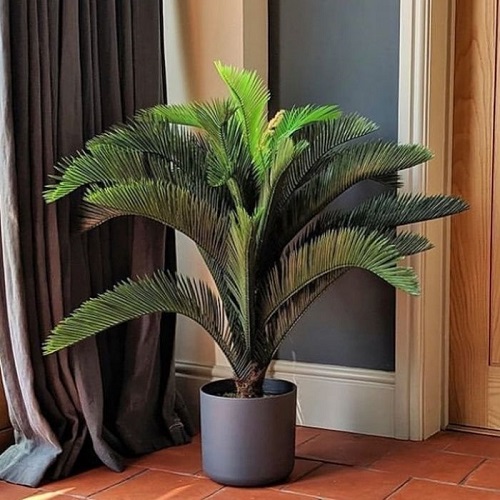
Botanical Name: Cycas circinalis
A striking addition to any interior landscape, Queen Sago Palm is an evergreen plant with an exotic, palm-like appearance. Its fern-like leaves are glossy, dark green and grow in a rosette arrangement on a thick trunk, making it a fantastic option for growing in pots.
18. Queen of the Prairie

Botanical Name: Filipendula rubra
This perennial Plant that Starts with Q is known for its feathery plumes of fragrant pink flowers. While it’s typically an outdoor plant, it can be grown indoors in containers in cool, humid environments. The plant grows quite tall and can reach up to 8 feet under suitable conditions.
19. Queen of Sheba Orchid
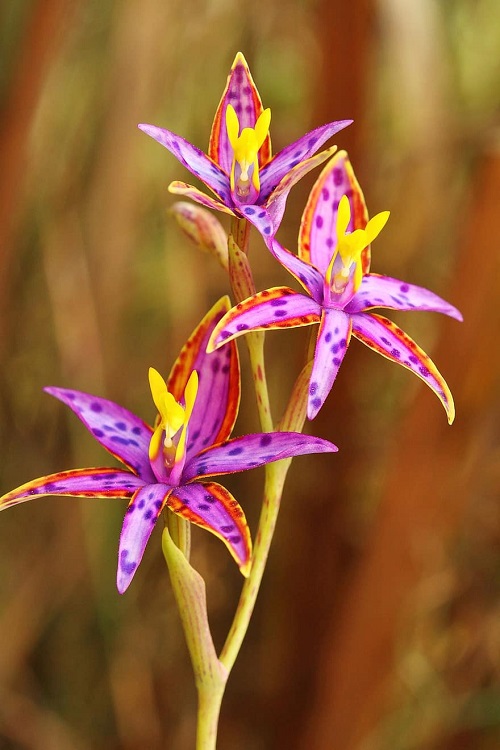
Botanical Name: Thelymitra variegata
A striking orchid showcasing intricate purple, yellow, and white blooms with a fringed lip. Long, slender leaves provide a green backdrop for the vibrant flowers. Like most orchids, it prefers bright indirect light and high humidity.
Look at the Most Beautiful Yellow Orchids here
20. Quinine Tree

Botanical Name: Rauvolfia caffra
This orchid is quite the showstopper! It stands out with its vibrant purple, yellow, and white flowers that have a unique fringed lip. Adding to its beauty, it has long and slender green leaves that act as the perfect backdrop for the stunning blooms.
21. Quebracho Tree

Botanical Name: Aspidosperma quebracho-blanco
Not really a plant, but a Tree that Starts with Q, the Quebracho Tree has a thick, rugged trunk and a dense canopy of dark green leaves. What makes it even more interesting is its small, greenish-yellow flowers that are found in clusters. Despite their size, they add a touch of charm to the majestic tree.
22. Queensland Bottle Tree

Botanical Name: Brachychiton rupestris
The Queensland Bottle Tree is a quirky one, thanks to its bottle-shaped trunk. This unusual tree has broad, green leaves, and it carries clusters of small, yellowish-red bell-shaped flowers. The combination of its peculiar trunk, colorful flowers, and leafy branches makes it quite a sight.
23. Queen’s Wreath
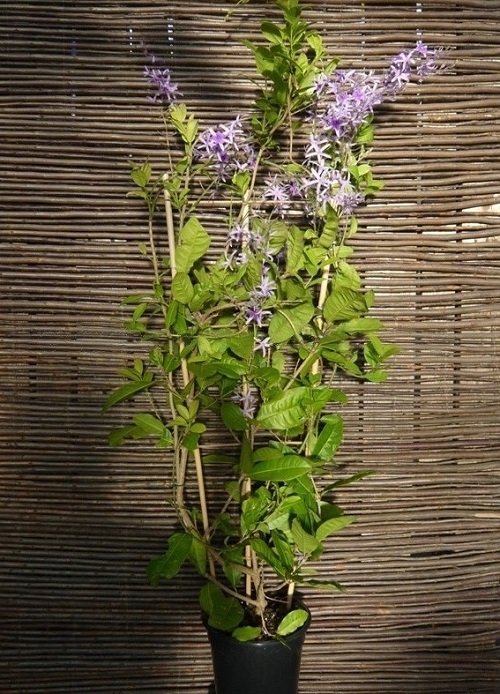
Botanical Name: Petrea volubilis
Imagine a plant that’s draping with clusters of purple, star-shaped flowers – that’s the Queen’s Wreath for you! It’s a climber, and it also has dark green, coarse leaves that only enhance its overall aesthetic appeal. It’s almost like a natural piece of art.
24. Quamash
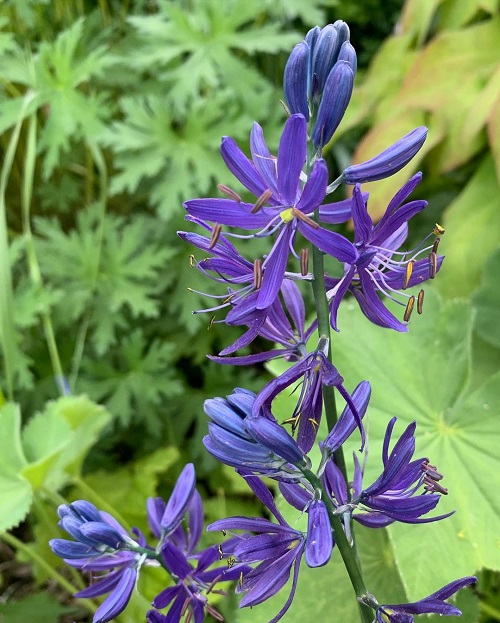
Botanical Name: Camassia quamash
The Quamash is a delightful plant that features blue, star-shaped flowers sitting tall on slim stems. It also has narrow, grass-like leaves that form a basal rosette around the base. The contrast between the vibrant blue flowers and green leaves is simply refreshing to the eyes.
25. Quiver Tree
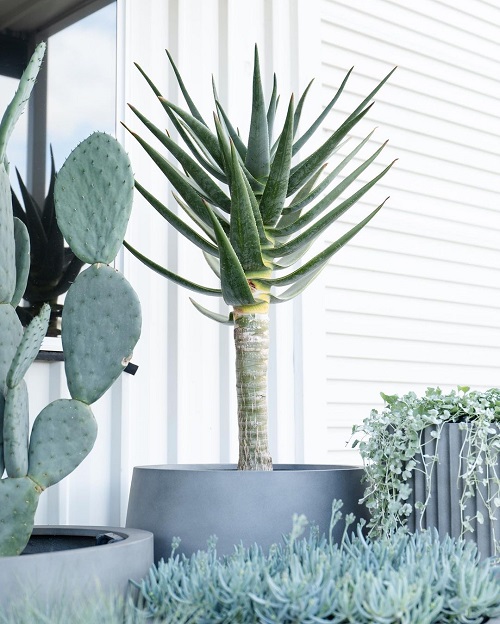
Botanical Name: Aloidendron dichotomum
Quiver Tree is a succulent tree with a crown of stems that branch in pairs and are covered in bright green, needle-like leaves. What’s more, it sprouts clusters of bright yellow, tubular flowers, adding a pop of color to its greenery.
26. Quill Flame Tree

Botanical Name: Nuytsia floribunda
The Quill Flame Tree is a spectacle with its bright orange, trumpet-shaped flowers that look like flames, rightly earning the name. It has a relatively smooth trunk, and its leaves are thick and dark green. The striking orange flowers against the green foliage give it a stunning tropical vibe.
27. Queensland Lacebark

Botanical Name: Brachychiton discolor
This tree is admired for its bell-shaped flowers that come in various shades of pink. The Queensland Lacebark also has large, lobed, glossy green leaves that contribute to its tropical flair. It’s a beautiful tree that’s sure to capture attention.
28. Queen of the Marshes

Botanical Name: Persicaria amphibian
This is a wetland plant that is covered in spikes of tiny, pinkish-red flowers. Its leaves are lance-shaped and often carry a dark spot. Together, they create a dense mat of vegetation that looks lush and vibrant, making it the queen of marshes indeed!
29. Quinine Bush
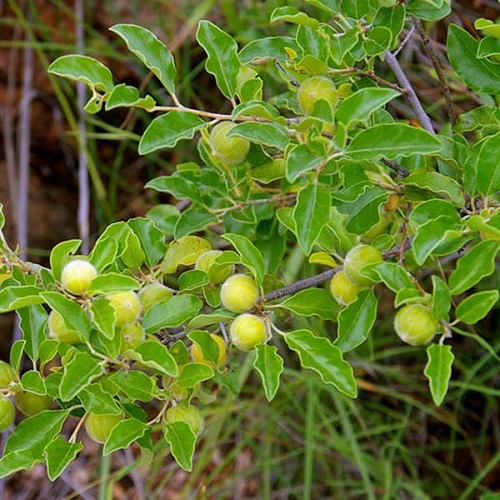
Botanical Name: Petalostigma pubescens
The Quinine Bush is a shrub that’s home to small, yellow, five-petaled flowers. Its elliptic leaves are silver-green, giving the bush a distinct dusty appearance. With its tiny flowers popping against the silvery foliage, this bush creates an appealing visual contrast.
30. Quail Plant

Botanical Name: Celosia argentea
If you love showy flowers, you’ll appreciate the Quail Plant. It’s recognized for its plume-like inflorescences that come in different colors like red, orange, yellow, or pink. Plus, its leaves are broad and often carry a hint of the flower color, creating a perfect harmony of hues.
31. Queensland Silver Wattle
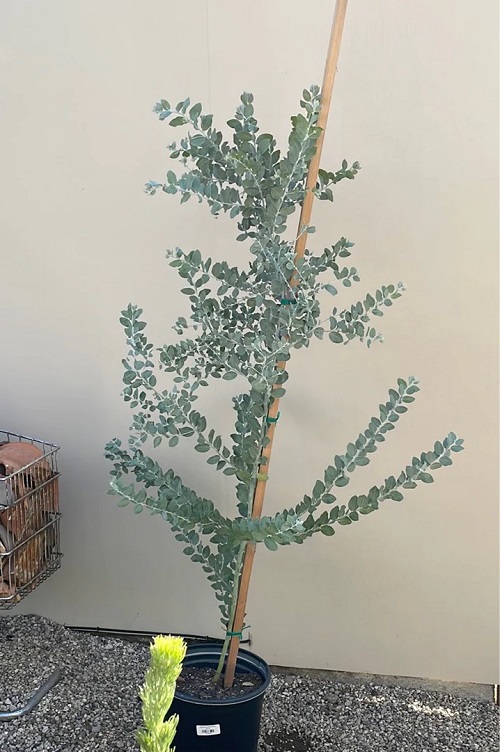
Botanical Name: Acacia podalyriifolia
This medium-sized tree is an absolute delight with its fluffy, yellow, ball-shaped flowers. Its leaves, on the other hand, are silvery-gray, offering a beautiful backdrop to the vibrant blooms. This contrast makes the Queensland Silver Wattle stand out in any landscape.
32. Quince-leaved Pepperwort

Botanical Name: Lepidium pinnatifidum
This is a small plant that grows close to the ground. It has deeply lobed, grey-green leaves and delicate clusters of tiny, white, four-petaled flowers. It’s the perfect plant to add a touch of delicacy and charm to your garden.
33. Quamoclit
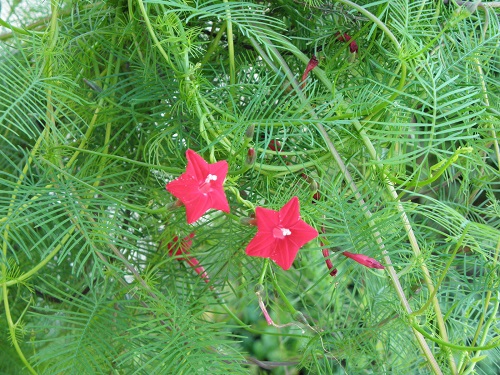
Botanical Name: Ipomoea quamoclit
The Quamoclit stands out for its fern-like leaves and vibrant, red, trumpet-shaped flowers. These flowers seem to glow amidst the green foliage, making the vine look all the more attractive. It’s a wonderful plant to add a touch of red to your green spaces.
34. Quartz Plant

Botanical Name: Pachyphytum oviferum
This succulent has chubby, egg-shaped leaves that have a soft, powdery coating, giving them a quartz-like appearance. The leaves can range in color from bluish-gray to pink, depending on the amount of sunlight they receive. The tiny, bell-shaped, peachy pink flowers add to its beauty.






